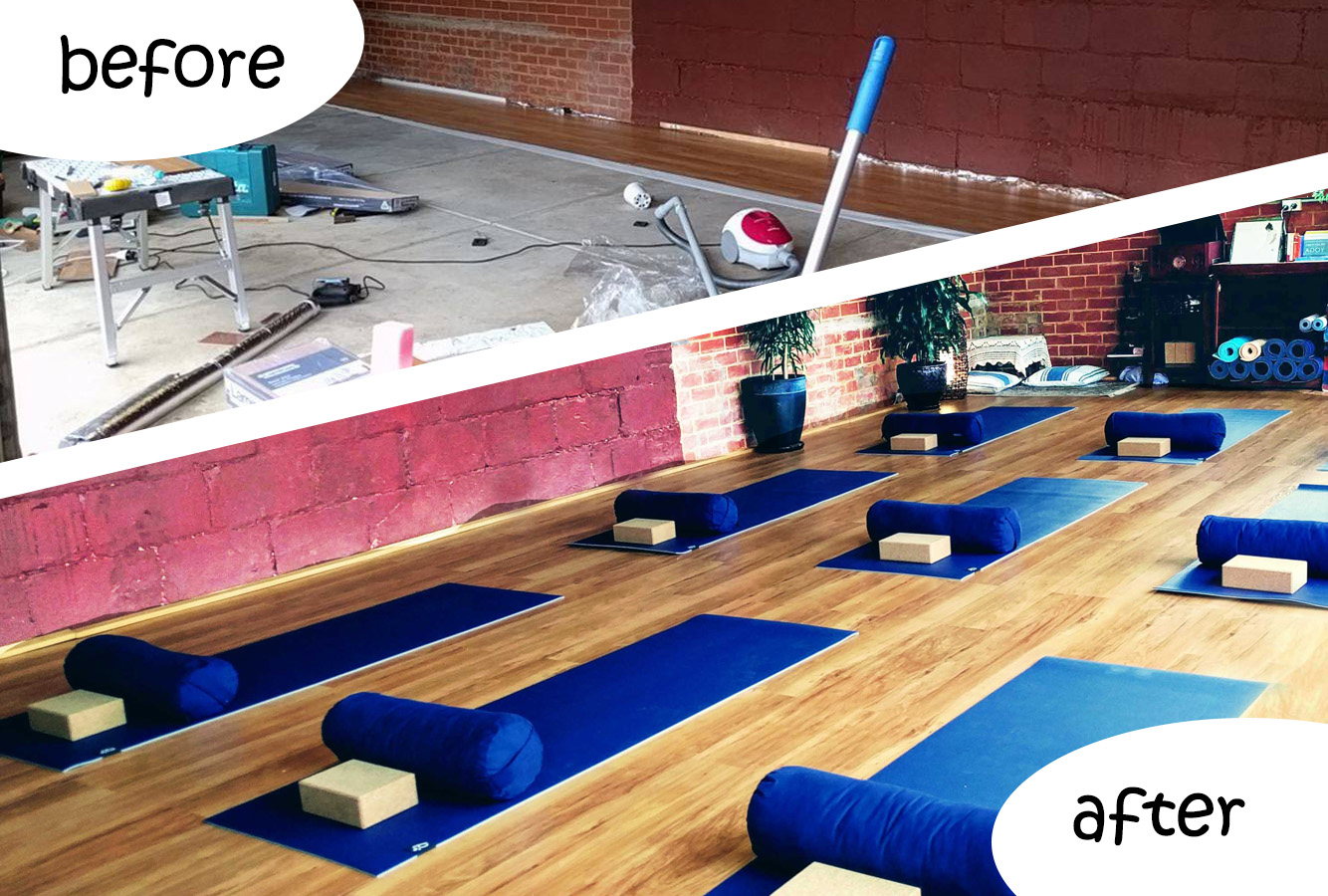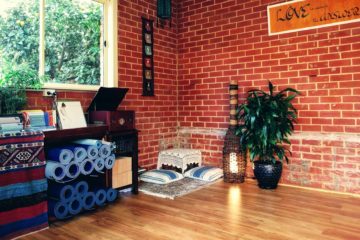In the article “Home-based yoga studio”, I share 3 types of studios that I already set up, and why home-based studio might be a good option for many yoga teachers, especially those who just completed their yoga teacher training course or those who are tired of travelling around to teach at different studios.
If you are looking for some more practical information on how to set up a home-based studio with limited budget, I hope my sharing below will be beneficial to you. When it comes to studio setup, there are a few questions that you might ask.
Summary of Contents
What is considered a suitable house for yoga teaching?
You might look for a house with a living room or garden or rooftop or garage with a minimum area of 25 square meters.
How to find such a house?
Some of you might be thinking, “oh, you’re such a lucky one who could find a house with quite spacious living room or a garage just behind the house”. To answer to that, I was not really lucky. In fact, I and my husband spent time to look for a house with non-negotiable criteria – “sizeable living room or garage” – so that I could conduct yoga classes. So, if you keep looking for it, you will find it. Also, be open to share with the landlord about your teaching plan when you rent the house, to avoid any conflicts later.
What do I need? How much is the setup cost?
Let’s take both of my living-room studio and Garage studio as examples for cost calculation.

Total cost ranges from $700 to $2,000, depending on how many mats and props and on how much spent for decorations. If you need support for yoga mats (b’ROCK mats for studio use), you can contact Beinks, it is a yoga mat brand that offers great deal for studio mats. I got my studio mats from them, very decent and solid mats (photo below).

Decorating a place is not my things. How should I do it?
It is not complicated or difficult to turn your living room or an empty space into a nice yoga place. Just a few things that you can note:
- Keep the place simple. Not so much stuff or furniture or paintings. Just choose 1 or 2 nice paintings to make it less empty/boring.

- Put in some plants. This will make big difference. People feel relaxed looking at trees, plants, green things.

- Use dividers or curtains, something that is easily removed. This can help cover the area that we don’t want people to see, for example, kitchen, garage roller doors. It costs much less than building a plaster wall. You can see in the below picture that I cover my eating table and kitchen with 2 connected room dividers. It costs only $90 for both dividers. I can easily remove them after class, to have the open living room back.

- Have windows to receive air and light. It is not so great to feel like we are practicing in a closed box.

- Re-use those decorations that you already have. There must be some reasons, some backgrounds why you bought certain things. If these things have some stories behind, isn’t it great to display in your studio and make people curious about them? Those things you see in the picture below are from my trips to different countries.
- The beautifully hand-made carpet on the bottom left is from Cappadocia, Turkey, I bought it because it is antique (80 years old) and was originally used for local people to ride on camels.
- The dark green lantern on the middle top is from Tibet, with very nice hand-painted Sanskrit characters.
- The carpet in the corner of the wall is also hand-made from Kerala, India, where I did my teacher training course. Very warm and comfy to sit on.
- The mat rack/shelf was bought from a second-hand shop, and it is originally a shoe cabinet. I removed the doors to make space for the mats.
- The board “Love is always the answer” is hand-made by me. I bought the panel, painted it, and attached the letters to the panel. Simple, cheap and easy to do.

- Add your personality into the place. What I mean by that is we need to show people a bit of ourselves by just looking at the studio setup. For example, I love being different and a bit old-school, so I get one of those vintage vinyl players, lace curtains for window, or the main color of the place is not very bright but a bit deep and nostalgic. Don’t bother so much if people like or don’t like the style, if people find “you” in the place, they will love it. People usually love being authentic.

So, I hope this sharing gives you a better idea how and how much to set up a home-based studio. This is the first step: setting up. The second step is running it, which I would share another time in another article. All the best to your teaching journey. It is not easy to start, but once it gets started, you can barely stop, as it is too enjoyable to stop.
Original article was published here


[…] It is always hard to take the first step. I still remember how I was nervous when I first placed the signage board in front of my house, wondering if anyone would come in. But you will be surprised how many people look for a different place to practice yoga (not everyone looks for big professional studio). Home-based studio is just one of the ways for you to teach yoga. There are still other options like teaching in the park, at the beach, private garden, at community centers, private class at people’s house…But if you still find a home studio suit you the most, you might be inspired by my article “How to set up a home-based studio with limited budget”. […]
[…] Refer to this article on how to set up a home-based yoga studio under a small budget. […]
[…] Refer to this article on how to set up a home-based yoga studio under a small budget. […]
[…] Refer to this article on how to set up a home-based yoga studio under a small budget. […]